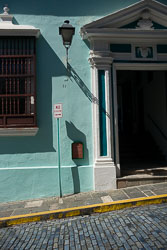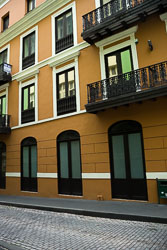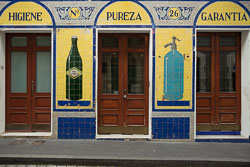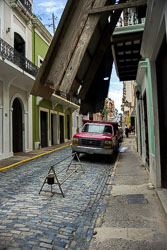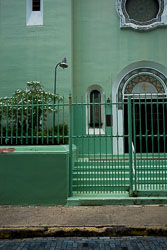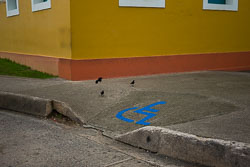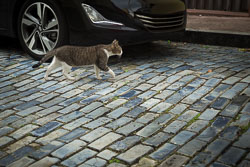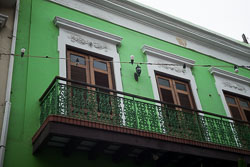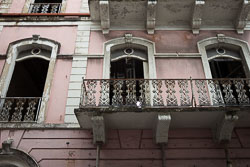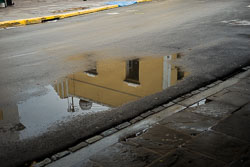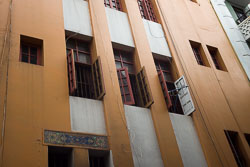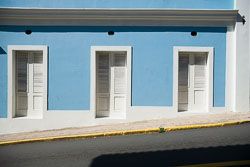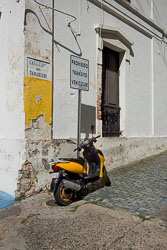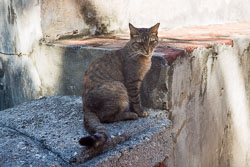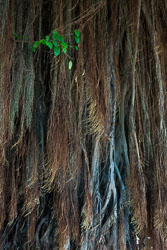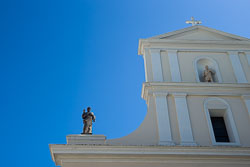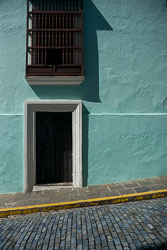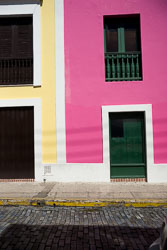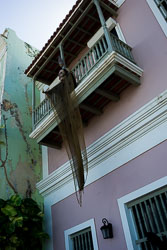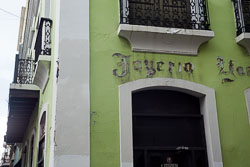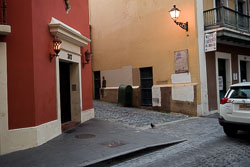Puerto Rico
Taking a Travel MATE by David Knoble on June 23, 2019
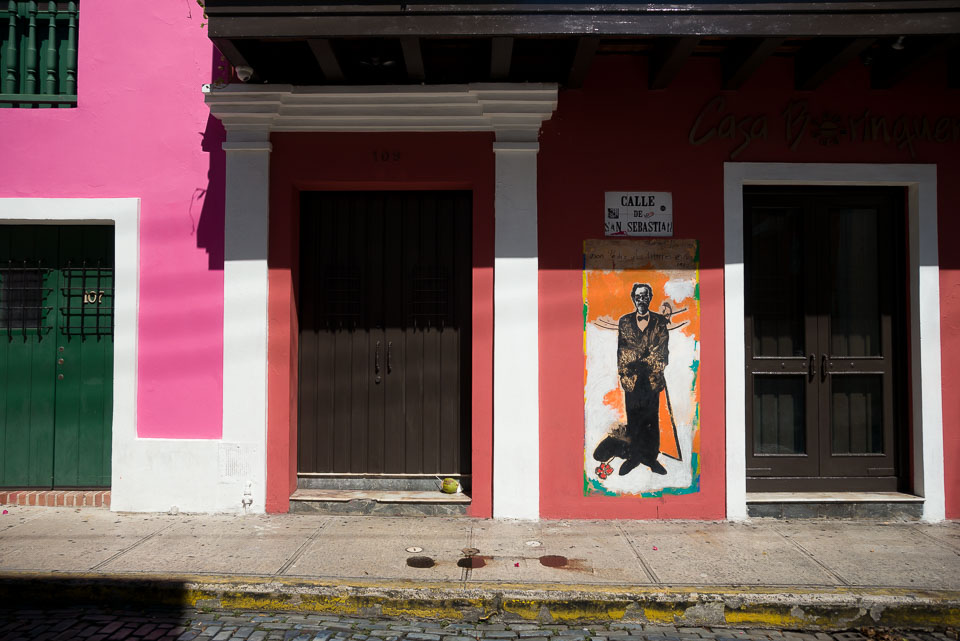
This article was first published in Viewfinder, Volume 52, No 2 of the International Leica Society, LHSA.
It’s not often you hear the phrase “Wait or mate?” To some it has no meaning and to others it brings a smile. In the last issue, Bill Rosaur brought us stunning images and a great review of the Leica Wide Angle Tri-Elmar lens - the WATE. In this issue I’m going to discuss its older sibling, the Medium Angle Tri-Elmar lens - the MATE.
Both of these closely named lenses share similar looks, similar operation and represent the only two multi-focal length lenses in the M-mount stable. The photographs here are from Puerto Rico and all taken with the MATE on a Leica M type 240. For this trip I took only the MATE, keeping the kit as compact as possible.
Puerto Rico, or “rich port” in Spanish, was colonized after 1493 when Columbus landed in this archipelago of the Greater Antilles. The Spanish left their mark building several fortifications that remain today. One fortification is Castillo San Filipe del Morro built in 1540 and named after King Phillip II. The towers on the outer walls, or Garitas, have become an icon of Puerto Rico.
I spent most of my time in Old San Juan, the original portion of the capital city. The name “San Juan Bautista” was originally given to the entire island by Columbus, meaning St. John the Baptist. Later the island was referred to as the rich port, while the capital city took the name San Juan.
The island is rich with cultural history. A commonwealth of the United States, Puerto Rico contains about 3.5 million residents that receive some benefits under the U.S. umbrella, but not all. They have been granted a governor and have a non-voting representative in Washington, DC, but decisions are affirmed or overturned in the mainland United States. While various referendums have been held in Puerto Rico, the most recent and decisive was November 6, 2012. Almost 78% of the population voted for U.S. statehood, but almost one-third of the ballots were blank or inadmissible; the United States has still not taken action.
Walking around inside the old city walls is a great experience. People are friendly and speak both English and Spanish, plantains are cooked in a variety of local fashions and the architecture is similar to other Caribbean islands - bright and colorful. Economic recessions have hurt real estate sales and buildings are in various states of remodeling and repair. Nonetheless, Old San Juan remains artistically beautiful. These images were taken in 2015, prior to the 2017 landfall of Hurricanes Irma and Maria which devastated much of the island by taking down most of the electrical grid and resulting in several thousand deaths. Climbing out of such natural disaster is not easy and will take years to recover.
Cats are an integral part of the island and most cats are stray in Old San Juan. However, they are well cared for by the locals. Similar to many shipping ports, rats are inevitably introduced to the local population and some believe they hit Puerto Rico in the early 1500’s. Cats became part of the solution. Over time local groups, like the non-profit Save-a-Gato (facebook @SaveAGato), have used donations to keep these feral cats from reproducing while still providing medical care and shelter. It is not uncommon for people to put out food and water for the stray cats to help keep the rodent population down.
Using only the MATE, I spent 5 days photographing in Old San Juan, including one day in the El Yunque National Forest. The MATE is sometimes referred to as the “28-50-35.” Yes, I can count. Yes, the numbers are out of order, but that is on purpose. The 28mm, 35mm, and 50mm focal lengths have been used on Leica M cameras since the earliest productions.
The rangefinder-bayonet coupling mechanism, or cam, adjusts frame-lines for different focal lengths determined by the cutout on the back of each lens. Herein lies the issue - the mechanical design of the cam is such that 28mm comes before 50mm, which comes before 35mm! This seemingly odd sequence has to do with the mechanical frame-line order. So, different from the WATE, the order of the focal lengths is not sequentially driven, but mechanical driven. While this could be changed by Leica, the consistency allows lenses from the 1950’s to remain compatible with modern digital cameras, and vice-versa, most modern lenses fit older film bodies.
The MATE was first introduced in 1998 using an E55 filter on the front. Beginning in 2001, a redesigned MATE replaced the original that was more reliable and featured an E49 filter size and an A53 lens hood (Leica #12450). Both versions use two aspherical elements to reduce distortions and monochromatic image errors and contain five highly-refractive glass elements. In Leica M style, this is all done to keep the lens size to a minimum while maximizing image quality. Erwin Puts says in his third edition of “Leica Compendium” this lens is a “landmark design in optical and mechanical construction,” and “an engineering feat of daunting complexity.”
A lens that moves horizontally in and out to change focal lengths is very common and not anything special in today’s computer assisted optical computations. Think of a 35mm to 105mm zoom lens many manufacturers produce. Even the WATE is effectively a 16mm to 21mm zoom and can be used at any point in between. However, moving lens elements to change from a 28mm to a 50mm and back to a 35mm in a linear fashion is unique. The MATE can only be used at these three focal lengths. Settings in between cannot be accurate focused using the rangefinder system nor can the EXIF information be recorded. Also unique to this lens is the cam cutout which changes at each focal length so the rangefinder frames and focusing work properly - truly is an engineering feat!
This brings us to one advantage of the MATE. Because the camera knows mechanically which focal length is used, the digital M bodies record which lens position was used for each image! The WATE does not couple to the rangefinder cam, so no focal length is recorded. Of course, like the WATE, 6-bit coding helps record the basic lens used in the EXIF.
Also like the WATE, the f/stop range starts at 4.0 and decreases to f/22. While an f/stop of 4.0 is not categorized with the likes of the Summicrons (f/2.0) and Summiluxes (f/1.4), the high ISO digital cameras today help level the playing field. Images made inside during the day are possible high ISO’s at handheld shutter speeds, and wide-open. The images will be noisier than the larger f/stop sister lenses, but it will work.
Another advantage to the MATE is the recessed lens. The MATE went through a design change before being discontinued in 2007. The interior mechanics were so complex that a redesign of the interior made the lens more reliable, reducing the filter size from E55 to E49 in the process. The front element of the lens moves in and out as the focal length changes. So, even at its closest point to the rim of the lens, the front lens element is set far enough back that a sun-shade is not necessary in many shooting situations. Compared to the front element of the WATE that can extend past the rim and must be protected, using filters on the MATE is simple.
The WATE was introduced in 2006 and the eight-year technology difference provides better overall image quality. However, the MATE still excels over older versions of the same focal lengths (28mm, 50mm and 35mm) and provides similar image quality as some of the newer ASPH lenses of the same focal lengths. There are two important characteristics to understand about the MATE’s image quality.
First, the image corners are softer when using wide-open f-stops. Not unlike many lenses, the widest f/stops are frequently sharper in the center of the image and softer at the edges. Many lenses perform at their optimum point after closing down two f-stops. The MATE is no different. Using f/8.0, the MATE typically has the largest coverage of the best image quality with the most extreme edges still showing softer details. This is actually very impressive considering the lens is really 3 in 1! The WATE has a similar issue with corner sharpness but is much less noticeable due to the advanced optical design and much wider focal lengths.
Second, the 28mm focal length on the MATE has a significant amount of distortion compared to more modern lenses of the same focal length. However, I have created my own correction as a preset in Adobe Lightroom, which I apply to digital and scanned negatives alike. The images here have been digitally adjusted for the lens distortion at 28mm.
The color rendition of the MATE is almost perfectly neutral, which is not the case with all Leica M lenses. This is a further attribute to the work that goes into designing a lens as complex as the MATE.
What do these all these characteristics mean in every day practice? We mount a lens and start photographing without always realizing the design work - glass, lens shape, aberrations, contrast, color, mechanics. In reality, the MATE will not provide 17 x 22 prints with sharp corners or fine details at wide open apertures. However, I have printed 11 x 17 and 13 x 19 images taken at f/5.6 and f/8.0 that are fantastic from proper viewing distances. The colors generated from this lens are spectacular.
Knowing that the corners may be soft, when photographing a detailed and busy scene, I either use a wider angle or I step back to allow for a small amount of cropping. While the older MATE design was subject to more flare, the newer version is almost flare free. I am convinced my UV filter was the cause of most flare I encounter. To reduce flare, I use the lens shade most of the time.
Most importantly, for travel photography, the simple and compact nature of one lens provides a distinct advantage. Focal lengths do not need changed in dusty or windy environments, and images are not lost because the wrong fixed focal length lens is attached. The 28mm distortion fixes easily in post-processing, provided important parts of the image are kept away from the extreme edges. The 35mm focal length is my favorite and I typically keep the focal length there while walking around.
You should note two items if you decide to find a copy of the MATE to use. One, the front element glass type is no longer manufactured, so if you damage it, you are out of luck. Second, the mechanical nature of this lens is so complex, either look for copies with a recent CLA (Clean, Lubricate, and Adjust) from Germany, or be prepared to send it off for a CLA and wait for a while. I found it worth the cost to pay more for the newer edition of a MATE that had both the 6-bit coding and a CLA already completed.
If you really want a compact travel kit, combine the WATE and the MATE to end up with 6 focal lengths in 2 lenses. Now the next time you hear “wait or mate?” you can answer with your preferred focal length “wide” or “medium!”

